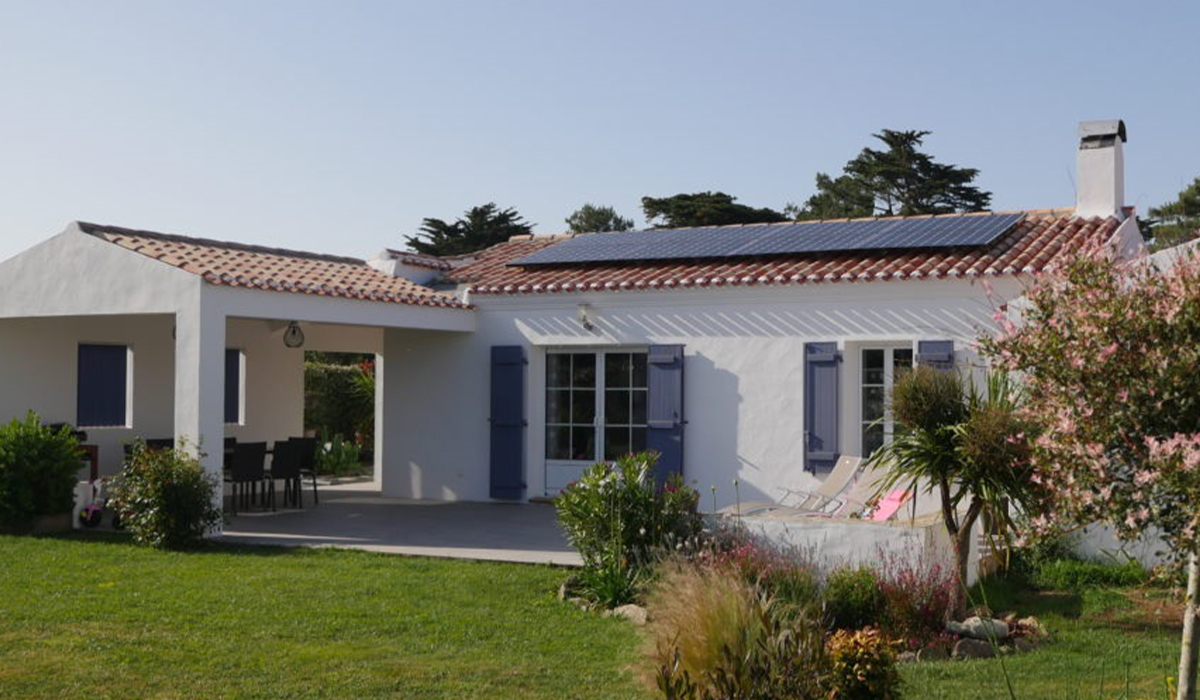From powering communal EVs to new legal frameworks, a world tour of noteworthy news around Local Energy Communities.
From Australia to Italy, cities and towns are watching their various inhabitants work hand-in-hand to create their own autonomous energy infrastructure using solar panels and independent microgrids.

The Harmon’Yeu project is an ENGIE initiative that will make it the first renewable energy community in the country to store and share surplus energy between users within the grid
Families, governments and companies across the globe are actively seeking new ways to participate in the fight against climate change on a regional level, and one organizational structure is drawing in many of them. (LEC).
Local Energy Communities, known as LECs, are becoming increasingly popular as groups of local actors — from individuals to small businesses — pool together the generating and sharing of renewable energy, saving money and diminishing harmful emissions.
From Australia to Italy, cities and towns are watching their various inhabitants work hand-in-hand to create their own autonomous energy infrastructure using solar panels and independent microgrids. Many of these international LECs are producing groundbreaking green energy management in their respective countries, yet no two look the same. From powering communal electric vehicles to operating under new legal frameworks, here is a selection of our favorite LECs around the world:
- FRANCE : Cailar, a small southern commune, is leading the way for LECs in France with a new project called Smart Lou Quila facilitating the distribution of clean energy in the area. The country’s first LEC to recharge electric car batteries, the energy-sharing system is making local infrastructure smoother and more efficient:
Created by the start-up Beoga, the project provides energy to six families in a housing estate via photovoltaic panels installed on rooftops as well as to the wider community via a panel located on the municipal stadium.
The community members don’t just share energy — they also have two electric vehicles and three stationary batteries of 10 kWh. While one car is for police usage, the other is slated to be a common good accessible to all participants.
A smartphone app is used to manage production and consumption in real-time, while all users have their own electricity counter. Every user’s data is counted and shared within one system, so they can also see how much energy is produced and consumed by the other members of the community — and adapt their usage accordingly.

- AUSTRALIE : On the other side of the world, the coastal town of Onslow is breaking Australian LEC records. The entire municipality went a full 80 minutes powered on nothing but solar panels and batteries, a world first:
The Onslow Power Project used 700 kW of solar energy generated from over 260 community members in combination with 600 KW of utility-scale solar capacity and a battery-based energy storage system.
Utility provider Horizon Power used technology firm PXISE Energy Solutions’ distributed energy resources (DER) system to manage the microgrid in real-time, taking load and weather forecasts into account. The DER system not only ensures a steady energy supply to inhabitants, but also monitors the local gas-fired power plant.
The project expects to save the town 820 tonnes of CO2 emissions per year, and act as a model to be upscaled worldwide.

- ITALIE : The Sicilian city of
Ragusa is pioneering LECs in the agricultural sector, as the arrival of a new project will bring renewable energy to 60
hectares of land shared by multiple different companies:
A 200kW photovoltaic system is set to be built, providing the grid with over 240MWh. All of this energy will be shared between the various players occupying the territory, who are mostly small and medium-sized enterprises (SMEs).
The businesses aren’t just the recipients of solar energy: They can obtain 20-year licenses to redistribute their energy from the state to other members of the grid.
The fruit of a collaboration between utility provider Enel X and the regional bank Banca Agricola Popolare di Ragusa (BapR), this LEC initiative is projected to save 121 tons of CO2 every year. The two companies hope to scale up the project all around the country in the future.
- ENGIE EYE : Île d'Yeu, an island off
France’s Atlantic coast, is generally known as a serene vacation destination.
Now, it’s making waves with the Harmon’Yeu project, an ENGIE initiative that
will make it the first renewable energy community in the country to store and share
surplus energy between users within the grid:
The brand new project — inaugurated on July 2 — is comprised of 64 photovoltaic panels installed on the rooftops of five local households, generating energy for a total of 23.7 kWp for 23 homes.
Unused electricity is stored in both a communal battery, located in one of the user’s homes, as well as in hot water tanks. This extra energy is managed by ENGIE Laborelec’s smart homes software and allows 96% of the energy generated in the first three months to be put to good use — covering 28% of users’ needs.
With the growth of LECs, the blurring between producer and consumer has led to inevitable judicial questions. In this instance, a collective was established under the name “Communauté d’Energie Ile d’Yeu,” a statute that legally recognizes the dual nature of participants.
It wasn’t just local households who collaborated to make this project a reality: ENGIE worked hand in hand with the town of Île d'Yeu, Vendée Habitat, the local energy agency SyDEV and Elise, an association that helps communities co-construct renewable solutions.

